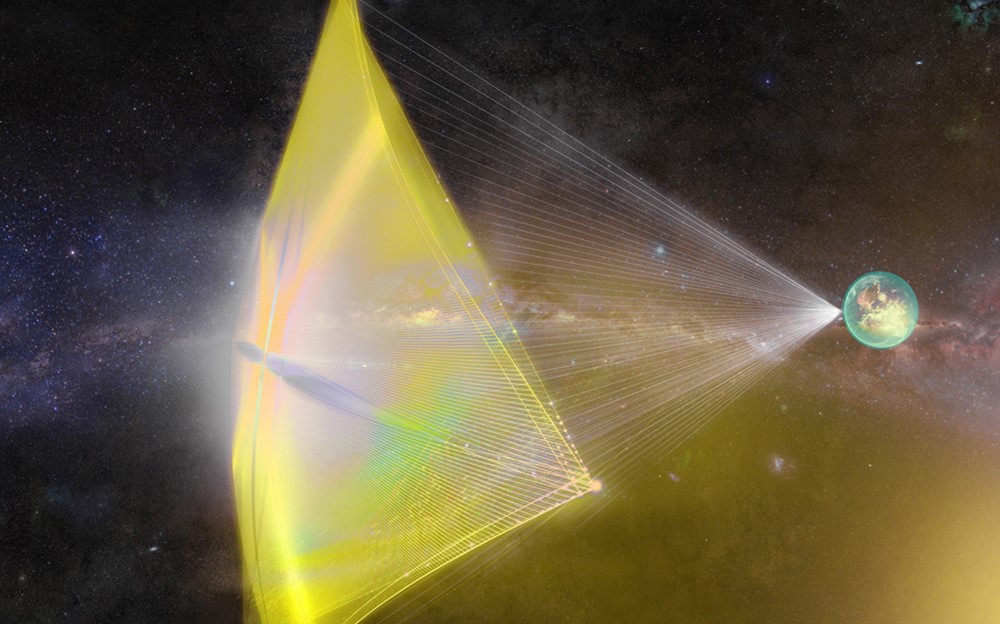In a groundbreaking development, physicists have successfully created the long-anticipated electromagnetic vortex cannon, marking a significant leap forward in both communication and scientific research. This invention combines the awe-inspiring dynamics of vortex rings with the principles of electromagnetism, paving the way for innovative applications that range from data transmission to remote sensing.
The Science Behind Vortex Rings
Vortex rings, naturally occurring phenomena in fluids such as water and air, are formed by pressure differences created when a jet of fluid moves at a velocity higher than the surrounding medium. These rings are fascinating not only to observe but also for their ability to maintain structural integrity over distances. In fact, these pressure-induced vortices have been a subject of study for years due to their self-sustaining nature.
One paper on the topic explains: “A velocity gradient forms as inner fluid layers roll around outer ones, creating a ring-shaped vortex. This process occurs in mere tenths of a second, sending the vortex ring into the atmosphere. As it rises, it slows and cools due to interactions with the surrounding air.”
While vortex rings are visually striking, they offer more than just spectacle. Scientists have long been curious about their potential practical applications. From natural occurrences in marine life, such as jellyfish propulsion, to industrial uses, vortex rings have intrigued researchers for decades. But adding electromagnetism to the equation takes this phenomenon to a whole new level.
Enter the Electromagnetic Vortex Cannon
Physicists R. W. Hellwarth and P. Nouchi proposed a solution to Maxwell’s equations back in 1996 that suggested the possibility of “flying doughnuts,” electromagnetic vortexes capable of propagating through space. The concept remained theoretical—until now.
For the first time, a team of international scientists has observed these electromagnetic vortexes in real-world conditions. “Microwave toroidal pulses can be launched by a transient, finite-aperture broadband horn antenna emitter,” the researchers explained. “These pulses serve as the electromagnetic counterpart to an air vortex cannon, showing remarkable robustness and maintaining their structural integrity over long distances.”
This breakthrough opens the door to entirely new forms of communication and data transmission. Unlike traditional electromagnetic waves, these vortex pulses exhibit complex topological features that allow them to carry more information. This ability makes them ideal candidates for next-generation communication networks, which require higher data rates and greater resilience.
How Does the Electromagnetic Vortex Cannon Work?
The team employed ultra-wideband, radially polarized, conical coaxial horn antennas to create a rotating electromagnetic wave structure. When emitted, the antennas generate an instantaneous pressure difference, forming electromagnetic vortex rings that maintain their energy and shape over long distances. These vortex rings are not only resilient but also exhibit skyrmionic textures—complex topological features known for their stability and self-healing properties.
According to the study, these unique pulses remain structurally sound even when faced with environmental disturbances. This characteristic makes them especially valuable for remote sensing and target detection, which rely on stable signal propagation.
Future Implications and Technological Impact
This innovative technology could have far-reaching effects beyond communication. The ability of electromagnetic vortex pulses to carry more data and resist environmental disruptions positions them as valuable tools in fields ranging from defense to space exploration. The potential for their use in precise target detection systems could lead to more advanced defense mechanisms and improved methods for identifying objects in deep space.
Looking forward, we can expect more discoveries to build on this breakthrough. The electromagnetic vortex cannon could become a cornerstone for next-gen technologies, including wireless communication and data encryption. With the ongoing need for faster and more reliable communication methods, the introduction of this technology couldn’t be timelier.











